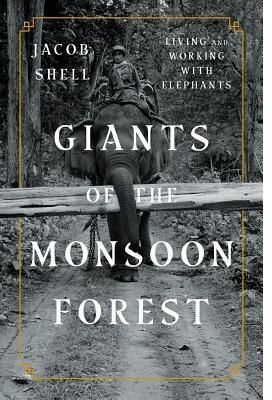India Post News Service
Humans have been living and working with elephants for millennia. But few know that this centuries-old tradition continues today among Asian elephants in the rainforests of India and Burma.
Blending history, science, and reportage, the author Jacob Shell offers a new perspective on animal intelligence and reveals an unexpected relationship between evolution in the natural world and political struggles in the human one in his book Giants of the Monsoon Forest: Living and Working with Elephants.
In India and Myanmar (Burma), monsoon rains and glacial runoff make forests impassable by motor vehicles, horses, boats, and even tanks. Elephants, however, thrive in these conditions. Trained and ridden by hill and forest people known as mahouts, and using their unique physical strength and prowess, elephants facilitate logging and gem mining, ferry people and goods across rivers, and move rebels and their materiel.
Elephants and mahouts “share a mysterious bond and a unique, co-developed understanding of the sylvan country on which both of them, for distinct but overlapping reasons, depend”.
Shell explores the multifaceted world of Burmese elephants and their humans – the human-animal connection, animal rights, wildlife conservation, history, climate, geography, biology, and politics. Drawing on his many visits and interviews with mahouts and others, Shell explains how elephants are caught and trained; how mahouts balance work with wildness (and happiness) by releasing elephants nightly so they can eat their 600-pound daily meal, sleep, and mate; and how mahouts fetch elephants in the morning for another day’s work.
Shell details how elephants are uniquely skilled at the tasks inherent in this work: clearing river logjams, fording rivers, handling timber and other cargo even while descending cliffs. Their trunks contain 150,000 muscle subunits, giving them surgical sensitivity plus the power to lift logs or break a man’s spine in a few seconds. They respond to up to 100 commands from their mahouts, often combined with tactile signals. Elephants show “creative dexterity” in devising solutions to urgent problems. They also show situational awareness and compassion, for each other and humans, that point to a cognitively sophisticated, subtle working consciousness.
However, without immediate action, Asian elephants face a grim future. Though the West assumes that ivory poaching is to blame for their plight, the biggest problem facing the elephants is deforestation. In analyzing potential solutions, Shell concludes that conservation and animal-rights purists can learn a great deal about the preservation of Asian elephants from the mahouts who know them best. The elephants’ best hope for the future may be as helpers in flood relief. Shell discusses an edifying event from the 2004 Indian Ocean tsunami.
In Banda Aceh, Indonesia, jeeps and trucks were useless in the aftermath of the tsunami, and eight elephants and their mahouts were brought in to wade through the water and clear debris. In this book, Shell shows how humans and elephants working together can help protect the fragile spaces they both need to survive in.
In praise for Giants of the Monsoon Forest, Yi-Fu Tun of teUniversity of Wisconsin and the author of Space and Place says: “At last, Jacob Shell’s book Giants of the Monsoon Forest describes a relationship with a fellow creature that – in Burma, at least – is more collegial rather than murderous or exploitative.”
Paying his complements Frans de Waal, author of the New York Times bestseller Mama’s Last Hug; Animal Emotions and What They Tell Us about Ourselves, says: “Even if our view of the human-animal relation is changing, the awe in which we hold elephants is amply fed by the stories and history in this fascinating book, especially those in which elephants appear to use their own judgment to solve problems in the field.”
Acoording to the publisher W. W. Norton & Company the book will go on sale from June 11.






